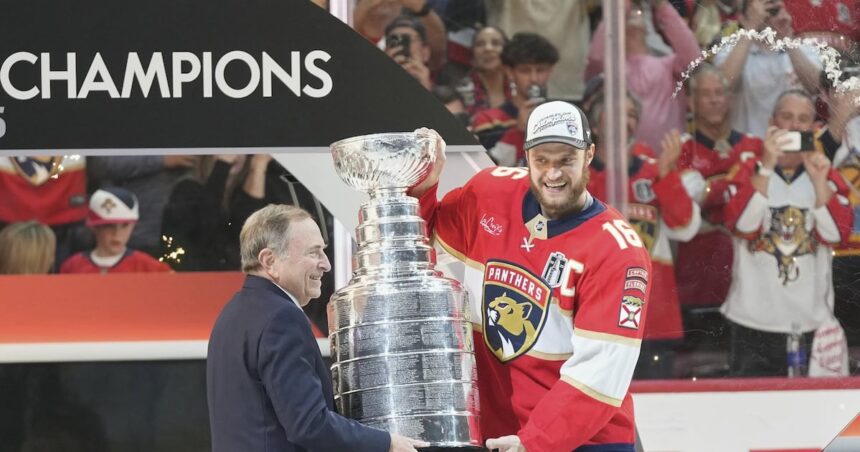After weeks of intensive negotiations, sources close to the bargaining table tell me the NHL and NHL Players’ Association have made substantial progress on a new collective bargaining agreement that would reshape the league’s economic landscape for years to come. Three senior league officials, speaking on condition of anonymity because talks remain fluid, confirmed both sides have reached tentative agreements on several key issues.
“We’re not at the finish line yet, but there’s genuine optimism this gets done without the drama we’ve seen in past negotiations,” said one veteran NHL executive involved in the discussions.
The current agreement, ratified during the pandemic in 2020, had been set to expire after the 2025-26 season, but both sides recognized the benefit of avoiding uncertainty during a period of unprecedented revenue growth.
For Canadian hockey fans who’ve witnessed three work stoppages since 1994, including the cancelled 2004-05 season, this proactive approach represents a welcome departure from the confrontational negotiating tactics that defined previous CBA talks.
At Tim Hortons locations across Ottawa this week, I found casual fans and diehards alike sharing the same sentiment. “Just don’t mess with the season,” said Martin Leblanc, 52, a government worker and Senators season ticket holder. “The game’s in a good place right now.”
The centerpiece of the emerging agreement involves the salary cap, which sources indicate will rise significantly beyond the current $88 million ceiling. According to financial projections shared by a league financial officer, NHL revenues have surpassed pre-pandemic levels, reaching approximately $6.2 billion last season.
“The players have been patient through the flat cap era,” noted player agent David Peterson, who represents several Canadian NHL stars. “This agreement acknowledges their contribution to the game’s growth while giving owners the cost certainty they need.”
Perhaps most notable for Canadian markets like Toronto, Montreal and Edmonton is the proposed adjustment to escrow withholdings—the percentage of player salaries held back to ensure the 50-50 revenue split between owners and players. These withholdings, which reached as high as 20% following the pandemic, created significant friction during previous negotiations.
Statistics from the NHLPA show Canadian players, who comprise roughly 43% of league rosters, have been particularly vocal about escrow reform given the tax implications in their home provinces.
Beyond economics, the league and union appear close on several player welfare issues. Sources familiar with the negotiations point to expanded medical benefits for retired players and enhanced concussion protocols as areas of agreement. The tentative deal also includes provisions for increased player participation in international tournaments, including the Olympics and a revived World Cup of Hockey.
The NHLPA’s new leadership under executive director Marty Walsh, the former U.S. labor secretary, has shifted the union’s approach. Walsh, who replaced the controversial Donald Fehr in 2023, brought a pragmatic negotiating style that has resonated with commissioner Gary Bettman.
“Walsh understands the business side while fiercely advocating for players,” explained Dr. Richard Thompson, a sports labor relations expert at Queen’s University. “His background mediating complex labor disputes has been invaluable in these talks.”
For small-market Canadian teams like Winnipeg and Ottawa, the emerging agreement offers breathing room. A league source with knowledge of the talks indicated the revenue-sharing program will be expanded, helping these franchises remain competitive in a league where financial disparities between markets continue to widen.
Recent polling from Hockey Canada shows fan confidence returning to pre-pandemic levels, with 72% of respondents expressing optimism about the NHL’s direction—the highest figure since 2017. This positive sentiment creates a favorable environment for labor peace.
Not all issues have been resolved, however. Minimum salary requirements, pension contributions, and playoff bonus structures remain under discussion, according to two people familiar with the negotiations. The definition of hockey-related revenue—which determines how the financial pie is divided—continues to be a sticking point.
“These aren’t deal-breakers,” cautioned a senior NHLPA representative. “But they’re not insignificant either.”
When reached for comment, NHL deputy commissioner Bill Daly acknowledged ongoing discussions but declined to offer specifics. “Both sides are committed to the process,” Daly said. “We’re having productive conversations aimed at continued stability.”
The timing of these negotiations is strategic. With the league’s U.S. television deals with ESPN and Turner Sports set to expire in 2028, securing labor peace would strengthen the NHL’s position in those upcoming media rights negotiations.
For Canadian fans who remember all too well the bitter disputes of past labor negotiations—particularly the 2004-05 lockout that eliminated an entire season—the cooperative tone represents a welcome evolution in the relationship between players and owners.
As one Western Conference general manager put it: “The game’s in a good place. Nobody wants to mess with that momentum.”
If finalized as expected in the coming weeks, the new agreement would mark the longest period of labor peace in modern NHL history and allow the league to focus on expansion opportunities, including potential new franchises in Quebec City and Houston that have long been rumored.
For now, hockey fans across Canada can take comfort that their winter entertainment appears secure for the foreseeable future. And in a country where the sport remains tightly woven into our national fabric, that’s news worth celebrating—even if it lacks the drama of past labor showdowns.






